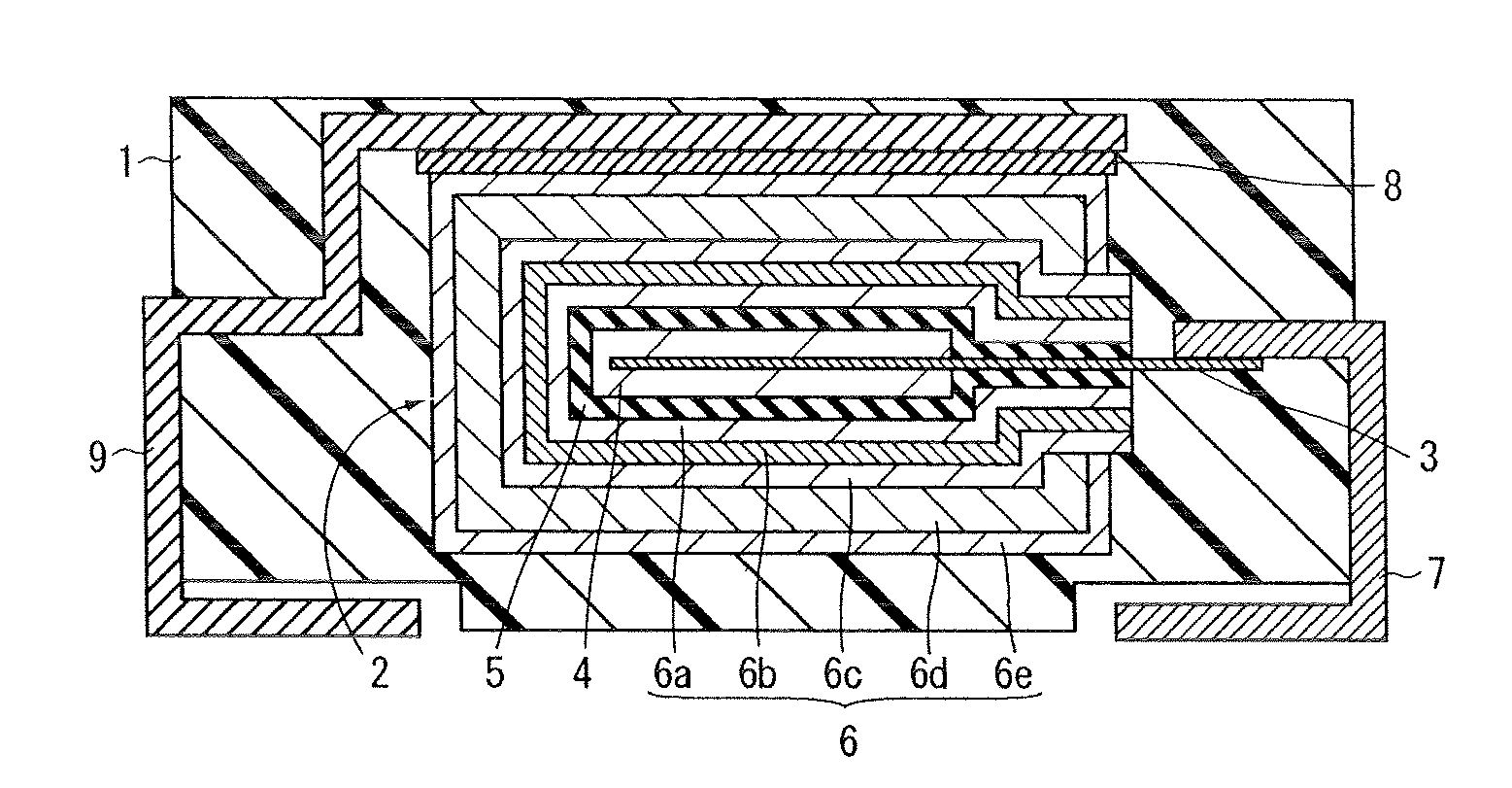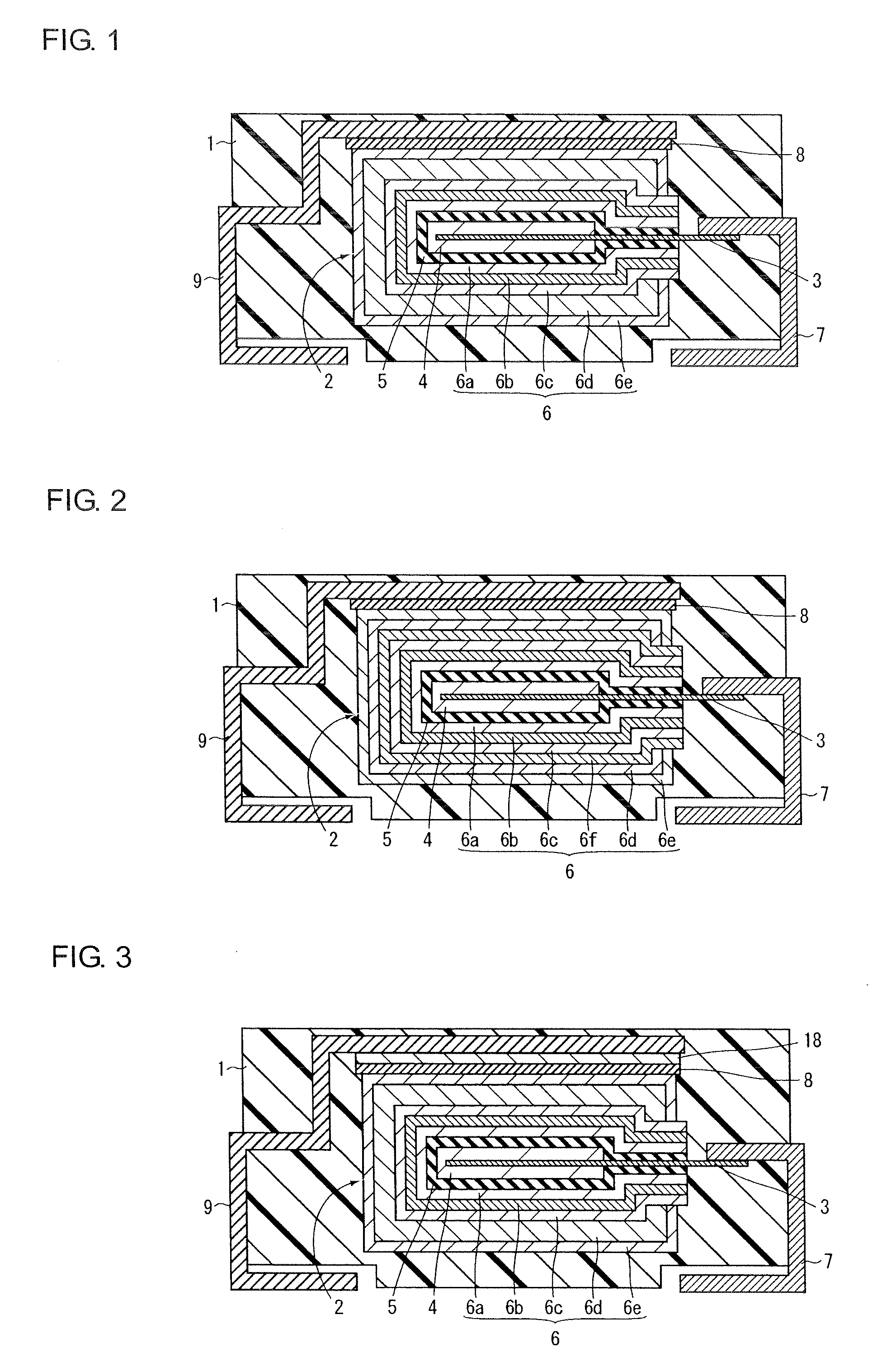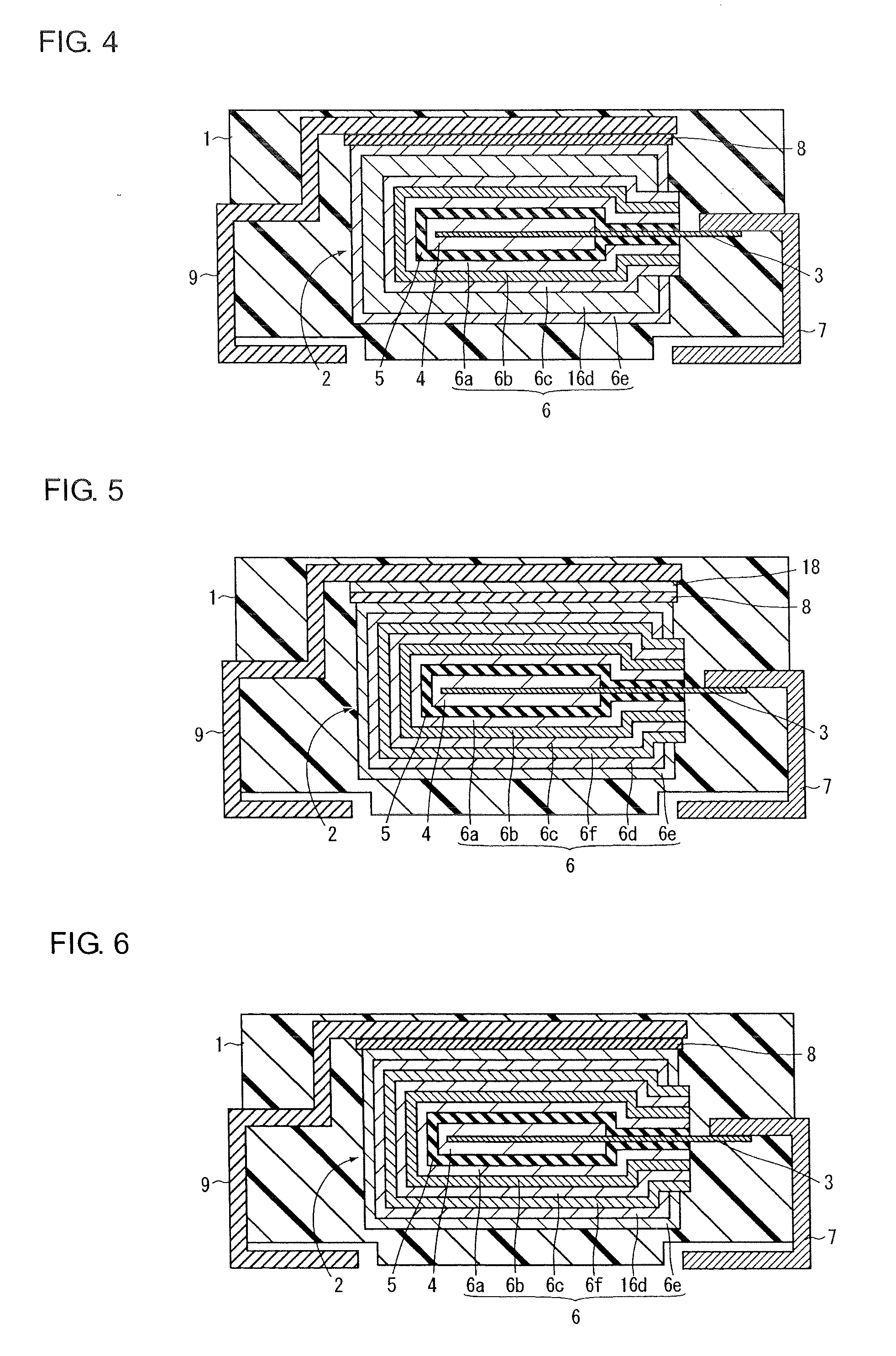Solid electrolytic capacitor and method for producing the same
- Summary
- Abstract
- Description
- Claims
- Application Information
AI Technical Summary
Benefits of technology
Problems solved by technology
Method used
Image
Examples
first embodiment
[0040]FIG. 1 is a sectional view for explaining the structure of a solid electrolytic capacitor according to a first embodiment of the present invention. The structure of the solid electrolytic capacitor according to the first embodiment of the present invention will be explained with reference to FIG. 1.
[0041]In the solid electrolytic capacitor according the first embodiment of the present invention, a capacitor element 2 is buried in an outer package 1 having a rectangular parallelepiped-like form and primarily made of an epoxy resin as shown in FIG. 1.
[0042]The capacitor element 2 is provided with an anode 4 in which a part of an anode lead 3 is buried and which is constituted of a porous sintered body of a valve metal such as tantalum or niobium, a dielectric layer 5 which is formed on the anode 4 and contains an oxide of the above valve metal and a cathode 6 formed on the dielectric layer 5.
[0043]One end of the anode lead 3 is buried in the center of the anode 4, and one end of...
experiment 1
[0061]In Experiment 1, solid electrolytic capacitors A1 to A5 having the structures shown in Table 1 were manufactured.
[0062]Here, the anode 4 was formed from a porous sintered body of tantalum or niobium particles. For the anode lead 3, a metal line made from tantalum was used.
[0063]Also, each anode 4 was dipped in an aqueous solution containing about 0.1 wt % of phosphoric acid which was kept at about 60° C. and a fixed voltage of about 8 V was applied to the anode 4 for about 10 hours to from the dielectric layer 5 made of a tantalum oxide or niobium oxide.
[0064]Also, the first electrolyte layer 6a was formed by chemical polymerization in the following manner. First, the anode 4 provided with the dielectric layer 5 on its outermost surface was dipped in a solution containing about 10 wt % of EDOT or Py, about 30 wt % of p-toluenesulfonic acid, about 40 wt % of n-butanol and about 20 wt % of pure water for 10 minutes. Next, the anode 4 was taken out of this solution and heated at ...
experiment 2
[0070]In Experiment 2, solid electrolytic capacitors B1 to B5 each having the same structure as the solid electrolytic capacitor A1 were produced except that as the intermediate layer 6b, octadecyltriethoxysilane (OTES), n-propyltrichlorosilane (nPTCS), dimethoxydiphenylsilane (DMDPS), methylphenyldichlorosilane (MPDCS) or mercaptopropyltrimethoxysilane (MPTMS) was used in place of APTES.
[0071]Each intermediate layer 6b of the solid electrolytic capacitors B1 to B5 was formed in the same manner as in the process of manufacturing the solid electrolytic capacitor A1 except that the first electrolytic layer 6a was dipped in an aqueous solution containing about 0.002 wt % of each of OTES, nPTCS, DMDPS, MPDCS and MPTMS instead of dipping the first electrolyte layer6a in the aqueous solution containing about 0.002 wt % of APTES.
[0072]Then, the produced solid electrolytic capacitors B1 to B5 were subjected to ESR measurement made at a frequency of about 100 kHz. The ESR measurement was mad...
PUM
| Property | Measurement | Unit |
|---|---|---|
| Electrical resistance | aaaaa | aaaaa |
| Electrical conductor | aaaaa | aaaaa |
Abstract
Description
Claims
Application Information
 Login to View More
Login to View More - Generate Ideas
- Intellectual Property
- Life Sciences
- Materials
- Tech Scout
- Unparalleled Data Quality
- Higher Quality Content
- 60% Fewer Hallucinations
Browse by: Latest US Patents, China's latest patents, Technical Efficacy Thesaurus, Application Domain, Technology Topic, Popular Technical Reports.
© 2025 PatSnap. All rights reserved.Legal|Privacy policy|Modern Slavery Act Transparency Statement|Sitemap|About US| Contact US: help@patsnap.com



